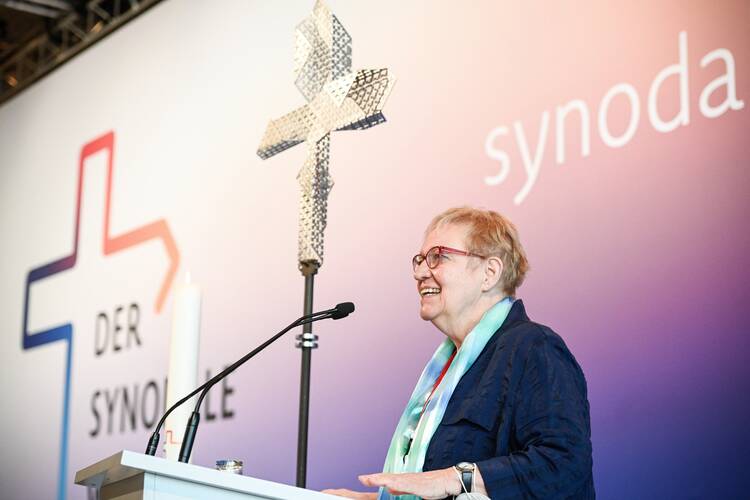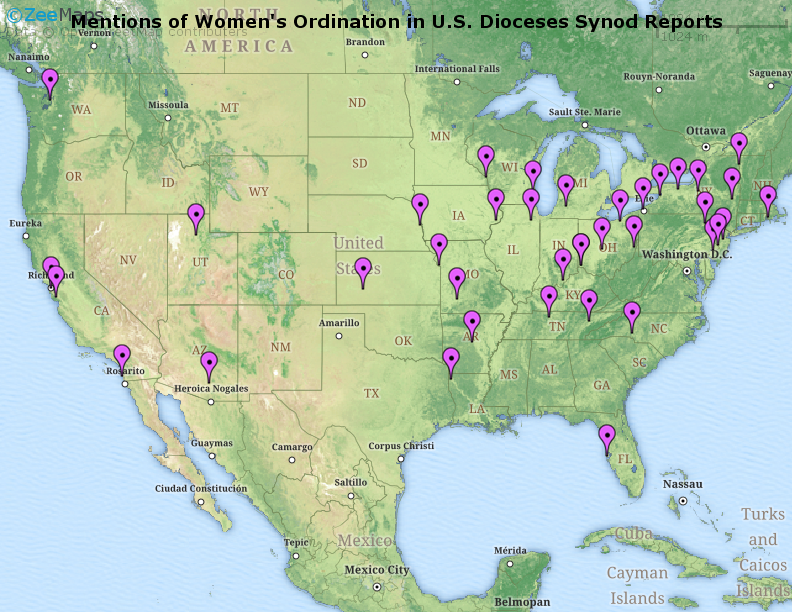Evaluating the Synod Process II
Last week, I was going to write about two ongoing Synod processes but I got captured by the Australians. This week I will write about the German Synodal Way. I have celebrated the decisions made there and the people leading the effort before, but, as you may have heard, not everybody is celebrating.
An “unsigned declaration of the Holy See” on July 21 threw down the gauntlet: “It seems necessary to make it clear that the ‘Synodal Path’ in Germany does not have the power to compel bishops and the faithful to assume new modes of governance and new approaches to doctrine and morals.” You may recall that women in ministry is one of the four emphases of the German gathering, which has met since 2019 and is scheduled to convene again in September.

Who is that “Holy See,” exactly? On the plane back from Canada, Pope Francis answered a German reporter’s question: ““Do you think this way of communication contributes or is an obstacle to dialogue?” (I do admire how many issues are condensed in that sentence.)
According to Gerald O’Connell in America:
Francis responded, “that communiqué was made by the Secretariat of State… It was a mistake not to sign it as Secretariat of State, but a mistake of office, not of ill will.” He recalled that he had written a letter about the Synodal Way two years ago, and said, “I wrote a letter, by myself I did it: a month with prayer, reflection, consultations. And I said everything I had to say about the Synodal Way, more than that I will not say.” He said that letter “is the papal Magisterium on the Synodal Way.”
He revealed, “I jumped over the Curia, because I didn’t do consultations [in the Curia], nothing. I did as my own path also as a pastor [for] a church that is looking for a path, as a brother, as a father and as a believer. And that is my message.” With this response, Francis distanced himself from the Holy See’s statement.
Unless you don’t exactly remember what was in that letter. Cindy Wooden of CNS reminds us:
In a 2019 letter to German Catholics — a letter also quoted in the new declaration —
Pope Francis emphasized that synodality is a process that must be guided by the Holy Spirit with patience and not a “search for immediate results that generate quick and immediate consequences.” Transformation “calls for pastoral conversion,” he said.
“Brothers and sisters, let us care for one another and be attentive to the temptation of the father of lies and division, the master of separation who, in pushing us to seek an apparent good or a response to a given situation, in fact ends up fragmenting the body of the holy and faithful people of God,” the pope said.
The July declaration from the Vatican reminded Catholics in Germany of Pope Francis’ words to them in 2019 that the local church and the universal church live and flourish together.
If local churches separate from the whole, he said, “they become debilitated, rot and die. Hence the need to keep communion with the whole body of the church always alive and effective.”
Whether the Pope feels as strongly now, of course, is not suggested by “distance” as O’Connell posits. On his trip, Francis discussed synods without the strong image that ends the quote above with the Canadian Jesuits. Michael Sean Winters in NCR and Antonio Spadaro in America each stress the spiritual aspects Francis emphasized: the joy of faith and the inspiration of the Holy Spirit.
The immediate responses to the declaration of the Germans now leading the Synod probably inspired the question of that reporter. A joint statement by the president of the German Bishops’ Conference, Bishop Georg Baetzing, and president of the Central Committee of (lay) Catholics (ZdK), Irme Stetter-Karp (notice the way they have a Bishop for authority and a woman for inclusion!) “We will not tire of emphasizing that the church in Germany will not follow a ‘German special path.’ Nevertheless, we see it as our duty to clearly state where, in our view, changes are necessary. In doing so, we already feel that the problems and questions we name are similar worldwide.”
Of course. The kind of divisions reported in Germany and Switzerland are bound to be repeated in local Synods everywhere. They are just further along with a different process, a representative assembly. Maybe that’s why the Pope’s process has all those levels of what I’ve called “consolidation.”
Christopher Lamb speculated in The Tablet when the declaration came out that it would not have been issued without the Pope’s knowledge, which I tend to doubt given his statement on the plane. Lamb also said that Francis is concerned that the “path has become disconnected from the people in the pews.”
“The problem arises when the synodal path comes from the intellectual, theological elites and is much influenced by external pressures. There are some dioceses where the synodal way is being developed with the faithful, with the people, slowly,” he told a group of Jesuit editors recently.
In other words, the fear is that the German synodal path has been driven by particular groups who have a pre-planned agenda for reform and could be succumbing to the temptation of lay clericalism.
I quote this only to make us aware of the kind of criticism the ordination of people of all genders and other inspired changes are likely to receive. Lamb goes back and forth on openness and boundaries, and concludes that Francis is probably not “too worried. Crises present opportunities, and new paths for the Church can be found out of the tensions. Buckle up for the ride.”
We’ve been riding along with the synod for quite a while. I doubt I will write about it again soon, but I want to remind you that the hard-working WOC staff is reading diocesan submissions to see how they reflect the hopes of the people in the pews. Here’s the form for you to send yours in.

And a last word from the best article among several in La Croix International about Australia’s Plenary Council. Paul Collins writes:
On the issue of equality, the PC eventually semi-caught-up with the 20th century in a vote on a set of re-drafted motions supporting equal dignity for women and men…
But the problem is that Catholicism has long resisted equality as a ‘feminist plot’ so that we’ve now just caught-up with the 1970s. As [Perth archbishop] Costelloe admitted ‘there’s still a long way to go’ to get the church into the 21stcentury.

2 Responses
The consubstantial complementarity of man and woman is the central issue:
http://www.pelicanweb.org/solisustv18n08page24.html
Thanks for clarifying a complicated process and tracing who was hiding behind the title, “Holy See,” before Pope Francis outed him (or them). No wonder the pope is tired. But I pray that he will stay with it and guide us through!